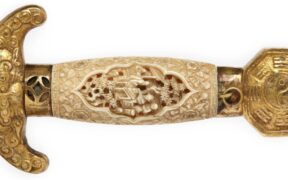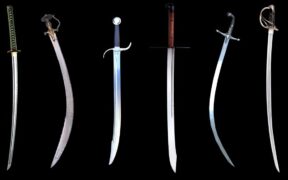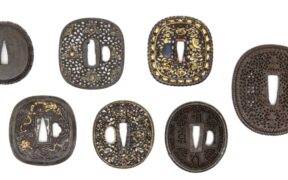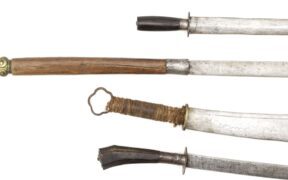Our content features commercial links to our products, committed to transparent, unbiased, and informed editorial recommendations. Learn More
Chinese Sword Sheath: Parts, Design, and Function
NO AI USED This Article has been written and edited by our team with no help of the AI
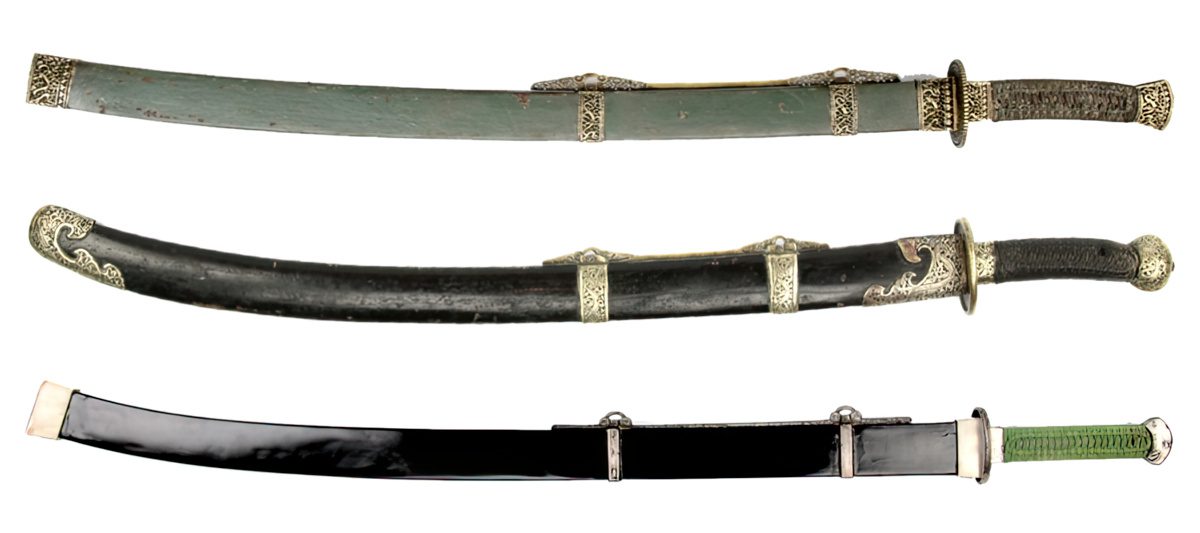
A Chinese sword sheath or scabbard is a protective case of a sword, preventing rust and degradation of the blade. It was often both functional and decorative, reflecting the status and wealth of the owner. It typically had metal mounts consisting of a mouthpiece, suspension bar, suspension bands, and chape. However, there is considerable variation in terminology for each of the various parts.
Let’s explore the characteristics of the Chinese sword sheath, its different parts, and the various terminologies collectors use.
Types of Chinese Sword Sheath
Sword sheaths or scabbards are essential components of Chinese swords, mainly the straight sword jian and the saber dao. Collectors also use various terminologies to refer to a jian scabbard and a dao scabbard.
1. Straight Sword Scabbard or Jianqiao

The sword sheath of a jian is called jianqiao (劍鞘). Its two types are the scholar scabbard and the martial scabbard. The former is generally made of wood, and covered with alligator or snakeskin, while the latter is made of metal that can be utilized as a blocking weapon. A jian scabbard typically featured elaborate and expensive ornamentation designed to show the wealth and status of the owner.
2. Saber Scabbard or Dāoqiào
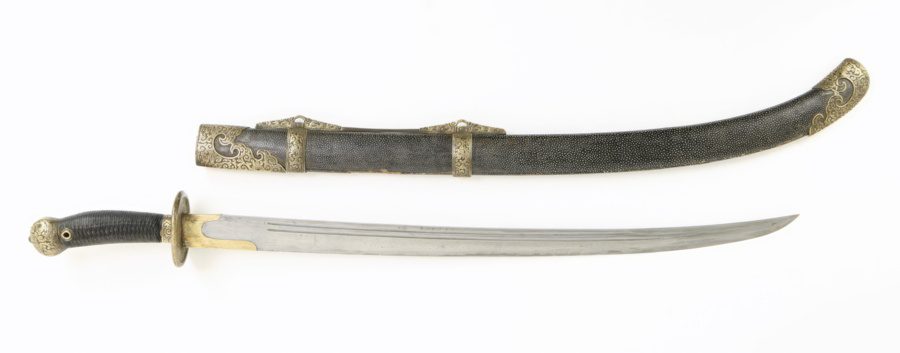
The term dāoqiào (刀鞘) literally means saber scabbard. The saber scabbard comes in two types of mounting: the round style yuanshi (圓式) and the angular style fāngshì (方式). Qing-period sabers usually had scabbards fitted with metal mounts, though rare types were made of all leather without them.
3. Scabbard for Double Swords or Sabers

Some sheaths were designed to hold two swords, with a separate channel divided by wood to prevent rubbing when worn. Among these are the double straight swords (shuangjian), double sabers (shuangdao), and butterfly swords. Generally, the two swords have half-hilts to fit snugly in a single scabbard side-by-side. These scabbards came in short and long varieties and were widespread during the Qing period.
Characteristics of the Chinese Sword Sheath
Chinese sword sheaths varied in style and decoration, and each scabbard fitting had a specific function.
Here are the characteristics of a Chinese sword sheath:
Material and Construction
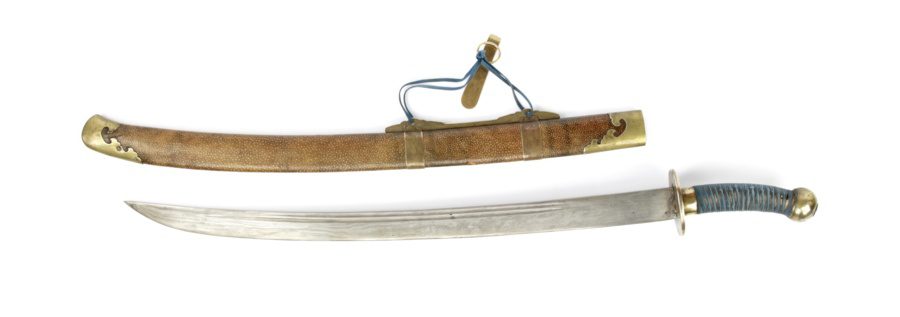
A Chinese sword sheath or scabbard is usually made up of two pieces of wood joined together. It is generally covered with leather or ray skin and lacquered. Many collectors regard the ray skin as an indicator of good quality, though Morocco-grained leather was the typical material during the 17th and 18th centuries. It was only in the 19th century that ray skin became widespread.

Many jian scabbards of the late Qing and early Republican period were made of wood and covered with copper wire. Soldiers were also issued sabers and black scabbards were appropriate for officer ranks.
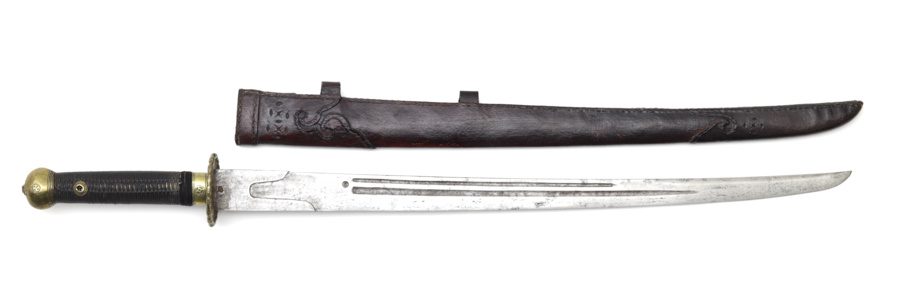
Both jian and dao have scabbard mounts made of iron or brass. However, rare types of sword sheaths, such as the 19th-century bannerman sabers and butterfly swords, were made of all leather without metal mounts. Instead, these sword sheaths had leather components similar to the shape of metal fittings seen on typical wooden scabbards.
Scabbard Mounting

Metal mounts hold together the scabbard. They are commonly called mouthpieces, suspension bands, suspension bars, and chape in the West. These components supported the structure of the scabbard and allowed it to be attached to a belt. In a saber scabbard, they are collectively called dāoqiào shù (刀鞘束), meaning saber scabbard binder.
Mouthpiece
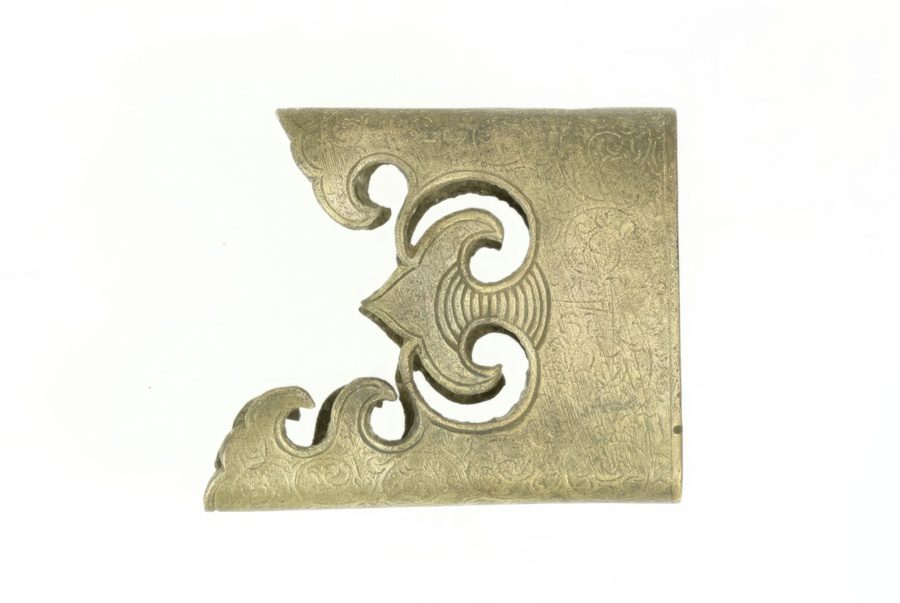
A mouthpiece or throat piece is the top part of the scabbard where the blade enters. A mouthpiece of a saber scabbard is called dāoqiào kǒugū (刀鞘口箍), which translates as saber scabbard mouthpiece. It came in two basic styles: angular and rounded with cloud-shaped cutouts.
Suspension Bands
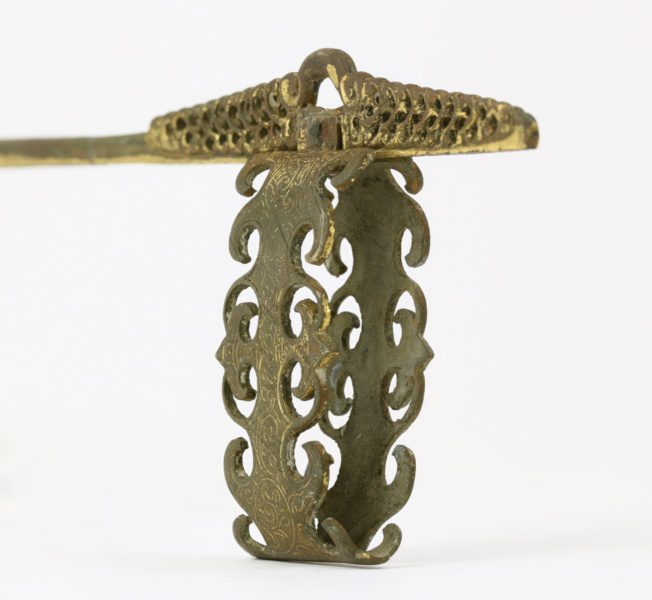
The suspension bands keep the middle of the scabbard together and hold the suspension bar. The suspension bands of a Chinese saber are called dāoqiào zhōngshù (刀鞘中束), which means saber scabbard middle binder. Some also use the term yào zi (靿子), meaning leg of boot. A jian scabbard also has suspension bands, sometimes with a shield-like shape at the front.
Suspension Bar

The suspension bar features holes to be attached to a belt hook. It is held by the two suspension bands of the scabbard. In Chinese sabers, it is called qiàoshàng shuāngyǎn shù (鞘上雙眼束), which translates as two-holed binder on top of scabbard. Some collectors also use the alternative terms dāo liáng (刀梁) and dāo shùliáng (刀束樑), which means saber bar and saber binder beam, respectively.
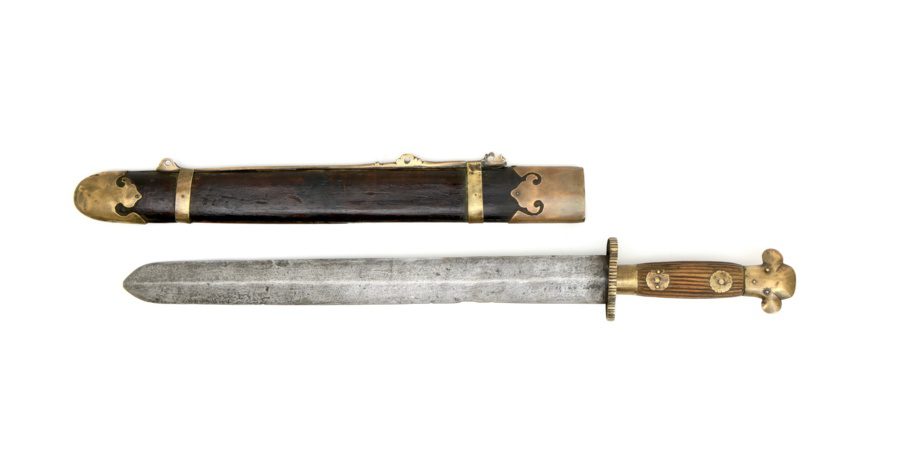
Some unusual jian scabbards feature a long suspension bar with three holes, suggesting that the sword was slung over the shoulder or suspended from the waist. Early suspension bars were typically simple and narrow, with noticeable loops instead of holes.
Chape
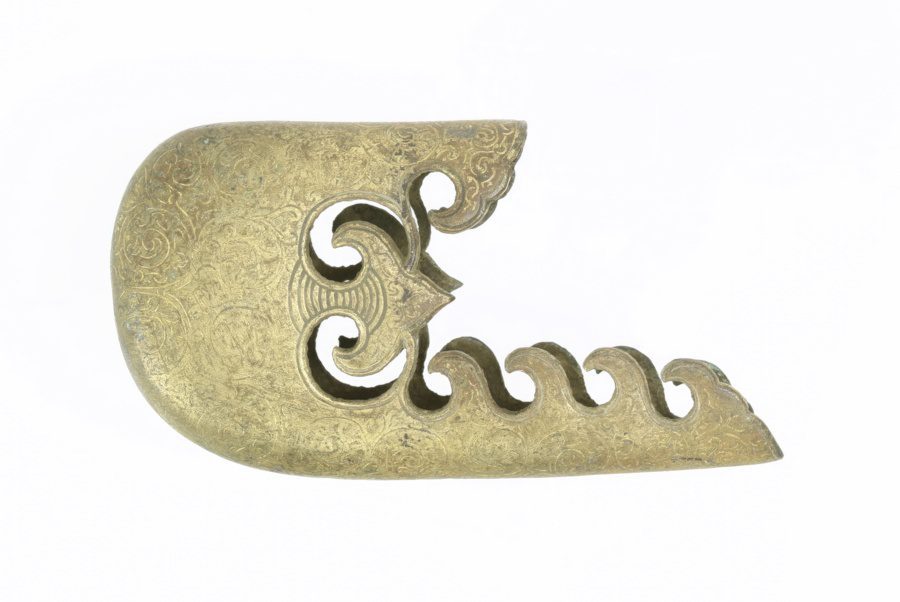
The chape refers to the scabbard’s end piece, a metal cap that protects the tip. In Chinese saber, it is called dāo qiào dǐ shù (刀鞘底束), meaning saber scabbard end binder. It has two main types: the dāo dǐ gū has an angular style, while the dāo dǐ yún has a rounded shape.
· Dāo dǐ yún
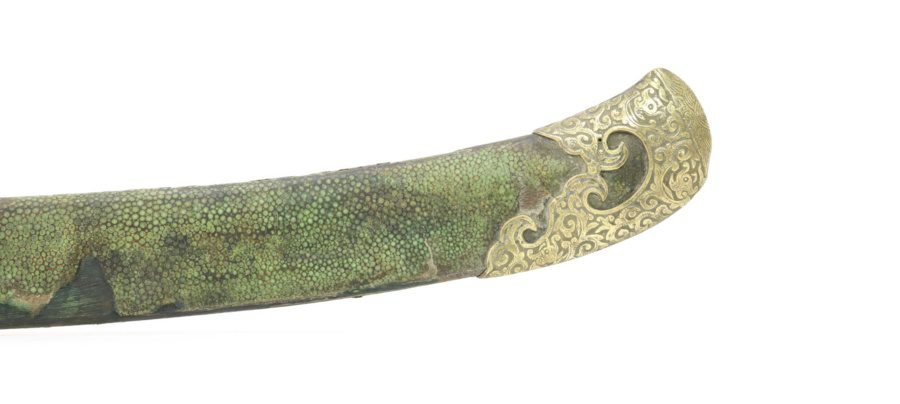
The term dāo dǐ yún (刀底雲) means saber end cloud, a reference to its stylized cloud cutout design. It usually comes with a matching mouthpiece. Most military sabers of the mid-18th and 19th centuries feature this style.
· Dāo dǐ gū
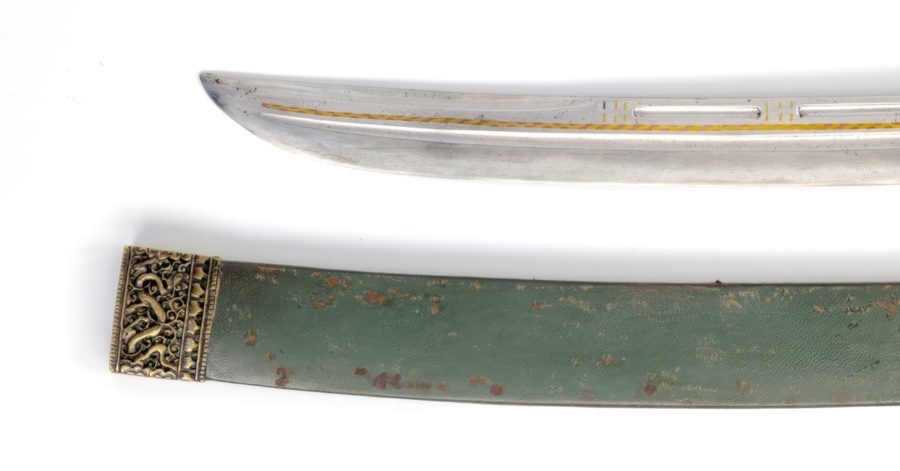
Dāo dǐ gū (刀底箍) means saber endpiece or saber end loop. It generally has a simple angular shape, with some being minimalistic and utilitarian.
Design and Appearance

Chinese sword sheaths widely varied in design, from simple and utilitarian to ornamental and symbolic. Some jian swords had a cloisonné scabbard—consisting of brass wire wrapped around the sword sheath, then lacquered—similar to cloisonné vases. Others were engraved and featured openwork designs.
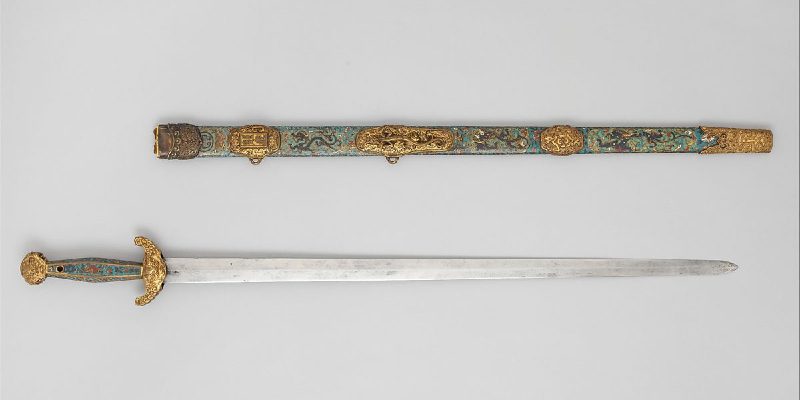
Many jian scabbards are decorated with Chinese symbols, such as dragons, bats, longevity characters, and even emblems of the Eight Immortals. Dao scabbards also feature decorated mounts, often kui dragons and scrollwork, which were popular among emperors and military officials from around the mid-18th century onwards.
